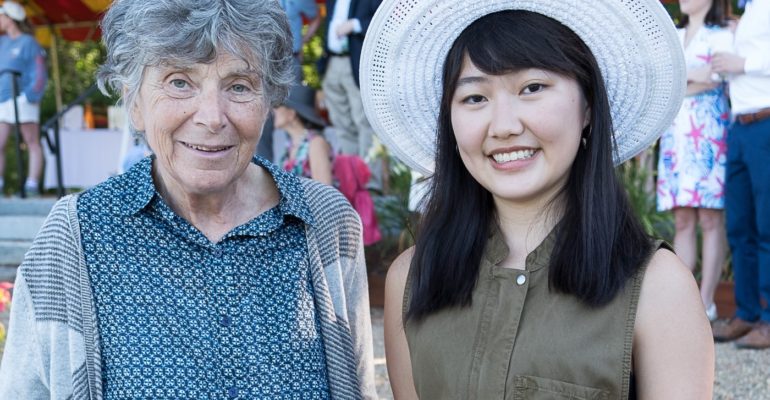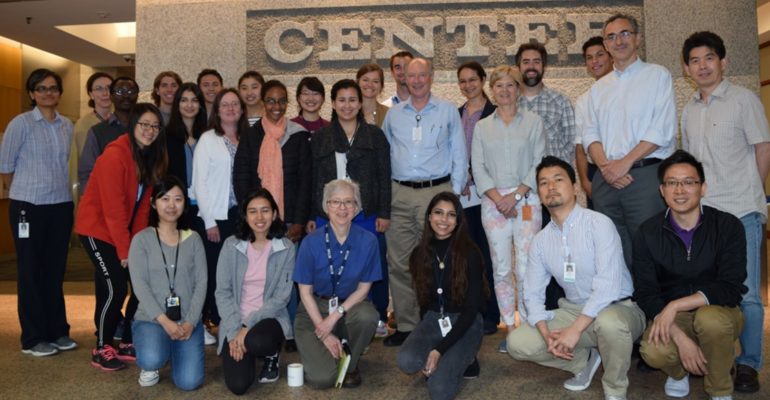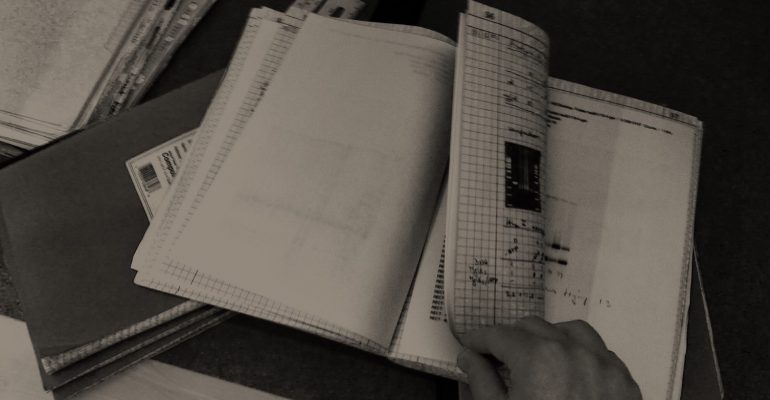In many of the “superhero” stories of our culture, from Batman and Robin to Sherlock and Watson, a superhero has an indispensable sidekick. Now, some real-life superheroes, notably doctors, are being paired up with a new sidekick, artificial intelligence (AI), that also may prove to be indispensable. This new dynamic duo might be the best […]
Continue readingDulcie Coleman Award 2017
Time flies when you’re having fun, or so they say, and three months at VIC have gone by in a flash. It’s hard to believe my time here has drawn to a close! In the time that I’ve been here, I’ve explored the beautiful city of Boston, gotten to know many excellent scientists at VIC, […]
Continue readingVIC at Myopia Hunt Club 2017
Polo, a sport originating in ancient Persia, has been played for over two thousand years. The name derives from the word “pulu”, which means “ball” in Balti, a Tibetic language spoken in South Asia. In the early 19th century, the modern sport of Polo was introduced to the western world through British India. It is […]
Continue readingTraining The Next Generation of Scientists
Training the next generation of scientists is an important part of VIC’s mission and is also a win-win situation for both the trainee and VIC. The trainee needs to gain formative scientific experience and develop problem-solving and critical-thinking skills, while hands-on experiences can help inspire students to further their education and prepare them for their careers. “My aim is to be able to work at the intersection between clinical practice and medical research” says Claire, an undergraduate medical student at Imperial College, London, on the reason why she chose to do her training at VIC. “I joined VIC because I was really attracted to the idea of scientific innovation and cutting edge research” reaffirms Prapti, a student at Wellesley. Trainees at VIC are from the US and abroad, and range from high school students to postdocs. Highly-trained senior scientists mentor VIC’s interns and have a huge impact in shaping a students’ career. “Hands-on research would enhance my practice of evidence-based medicine and hone skills that, in the future, as a humanitarian physician, I will be able to apply beyond the lab bench” asserts Reyna, a pre-med student at the University of Tennessee Health Science Center College of Medicine.

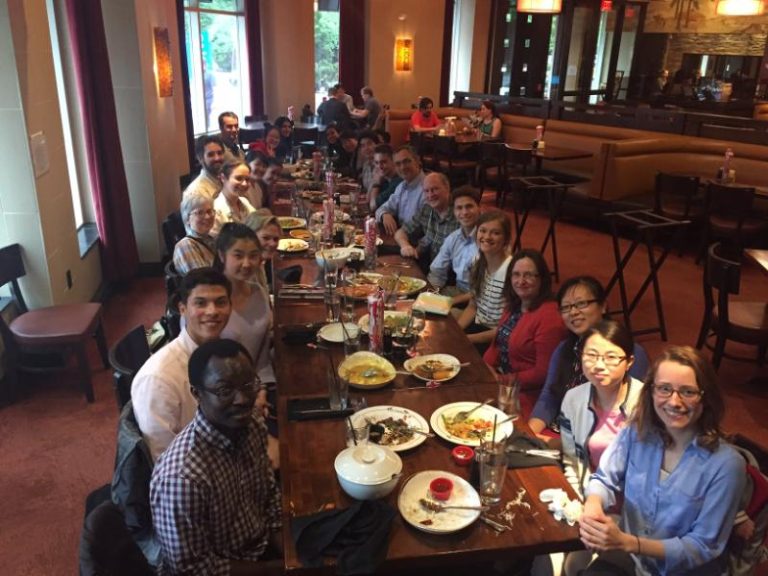
VIC, on the other side, can further develop its research thanks to the participation of these young scientists. The training program is an exciting opportunity for VIC that often results in a peer-reviewed publication. “As a returning student, I knew I would find myself both challenged and exceptionally well mentored here at VIC, as I had two summers prior” indicates Anders, a recent graduate of McGill University and currently applying to Medical Schools; and, as he likes to point out, is a returning student because the skills and knowledge he learns during his time at VIC could not be acquired in a classroom at university.
The Importance Of Being A Philanthropist
There is something in common between the 10th century BC in ancient Greece, the 17th century in Baroque-style Europe and in the US today; philanthropy! Now, more than ever, philanthropic help is essential. Philanthropy is not solely restricted to the arts, philosophy and culture in general, but has been elevated to embrace a more general “love of humanity”. And, if in the past that love of humanity was ascribed mainly to culture and art, it has expanded to encompass science and technology. The upward progress of humanity comes though science and technology and through the re-evaluation of human values. Although philanthropy has become chic and can attract celebrities and the wealthy, it can really boost and support science research; especially as government financing has continued to plunge in recent years. From Silicon Valley to Wall Street (mainly in the high-tech sectors) the new philanthropists have made science philanthropy hot and attractive. Social progress is now, not only achieved through culture and art, but also through scientific research. This private support has, however, also raised questions about the future of research for the public good. Philanthropy can change the direction of research; this is a fact, although controversial as it is filling the gaps left by the reduction of government funding and so becomes more important than ever. But, many ideas are not funded by federal funds because of skepticism or because they are considered too risky. Philanthropy can, therefore, be used in these situations to catalyze ideas at the very early stages. Once these ideas are successfully developed, government funding can be more easily obtained and used to expand and develop the initial idea further.
VIC has already envisioned the possibilities and embraced philanthropy as a crucial part in the support of specific projects and pilot studies. Private philanthropy has contributed actively to the success of VIC, shaping VIC to the center it is now. Without this support, VIC would not have made important scientific discoveries and developments. In particular, many of these private investments are intelligently and successfully used during the early phase of a project (or a study). Scientists leading these projects receive unique mentorship, guidance and support from the VIC management team which enables them, and VIC, to leverage funding from government organizations. Although it might appear a simple strategy, VIC has anticipated, and predicted, this as a successful path to accelerate the development of novel studies to “survive” in the increasingly challenging environment of government funding for scientific research.
One of the most interesting aspects of modern philanthropy is that is not confined to the rich. Literally anyone can be a philanthropist and make an impact towards social progress. Science can benefit from everyone’s generosity, whether they are wealthy individuals or not, and the latter may well share a bigger percent of their income to charity and philanthropy. It is not a matter of how much a person can donate but rather where and how that person wants to make their donation. Indeed, VIC has a group of young professionals who are actively involved in arranging events to help raise funds. We can all contribute to the love and good of humanity and one way to do it is to focus on science philanthropy!
March For Science: What’s Next?
More than a week has passed since scientists gathered together to march and to celebrate science and the role it plays in everyday lives. On Saturday 22 April, at the March for Science in Boston we, as VIC, were marching together with hundreds of people to stand up for science. It was truly inspirational. In many cities across the world scientists decided to champion evidence-based policy and they decided to do it on a very special day, the Earth Day. Massachusetts General Hospital was there too together with all the many scientific institutions that reside in Boston. Many science supporters were there as well, to reinforce scientists’ voices, regardless of the rain and the cold weather. It was truly moving to witness how much people care about science and how much they believe that scientific progress is in the public’s best interest.
The event was intended to be non-partisan but with an acknowledgement of the actual political agenda. The funding cuts that have been hypothesized are considered unacceptable in the scientific community. All the emphatic speeches that we heard that day, from the primary school kid to the emeritus professor, reminded us that science is not to be taken for granted and neither is its funding. Science does not just happen but it needs to be nurtured, supported and welcomed by society. Science is an important component of human kind, not only to improve our health but also to make progress for human civilization.

So now, what’s next? Most people have no idea how science actually works and this is one of the main reasons why science is always under attack. Being “pro-science” cannot be just a cultural phenomenon or an elite way of thinking. In this, scientists are guilty for not being effective communicators of the relevance and the impact of their ideas and their discoveries. There is too much confusion and misunderstanding about what scientists do and work on. VIC has decided to be proactive, not only in making science communication effective, but also as a way to reach potential donors who are non-scientists themselves. VIC indeed, does not rely only on the support of public grants, but also on the generosity of private philanthropy. And this can happen only if we can make the general public understand the role of science and the benefits for human kind. As a very first step, scientists must start communicating science effectively to make society understand the basics of their work in order to allow informed decisions to be made.
A New Device Can Revolutionize Vaccine Adjuvant Technology
To maximize vaccine efficiency, chemical and/or biological substances are used as immunologic adjuvants to increase the body’s immune response to the vaccine. A new class of vaccine adjuvant, namely laser light, is slowly becoming of interest for its potential benefit of being safer than the classical adjuvants and for being more efficient for intradermal vaccination. Most vaccines are still delivered by the intramuscular or subcutaneous routes but there is a growing interest in intradermal vaccine delivery. Indeed, the dermis and epidermis of human skin are rich in antigen-presenting cells that enhance the immune response. Laser light offers promising anticipation for its use with intradermal vaccines. Here at the Vaccine and Immunotherapy Center (VIC) we have focused on developing a new class of energy-based, physical immunological adjuvants. In particular, we recently developed a handheld near-infrared laser device that can potentially be used as an adjuvant in vaccine administration and at a lower cost than current commercially-available laser systems. The small size and the low cost of the device could be beneficial to engage this adjuvant for mass-vaccination programs.
As for laser therapy though, one of the biggest challenges to face is human skin pigmentation and its high variability. Laser application in subjects with darker complexions remains a topic of great concern. Melanin is the primary pigment that determines the color of the human skin and understanding the relationship between melanin and wavelength is fundamental in the use of laser devices for human therapies or treatments, as melanin interferes with specific target absorption. The near-infrared wavelengths, that the new laser device developed at VIC is capable of producing, makes, in principle, the variability of light absorption based on melanin chromophore almost negligible. This is extremely important for the prospect of mass-vaccination for patients with large quantities of melanin in the epidermis. This laser system, and the next-generation devices that Dr. Kashiwagi is currently working on, have the potential of a more uniform effect across skin pigmentation variability. In countries like the US where heterogeneity in the skin color population is high, a laser device with broader wavelength ability is extremely promising in the treatment of patients with different levels of epidermal melanin.
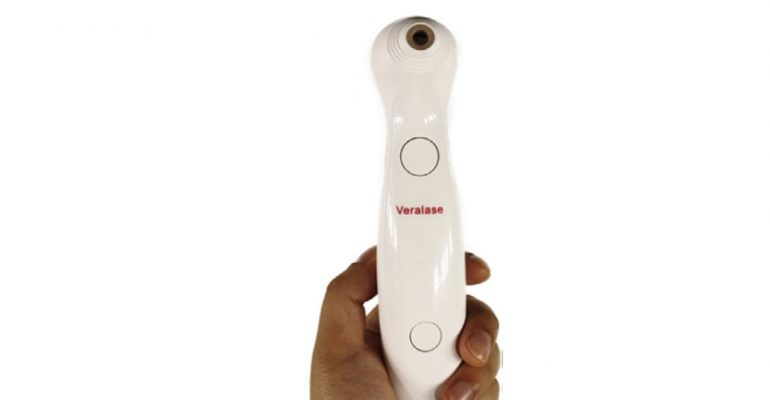
The Importance of Recording Research – Insights From The Meeting With LabArchives
Back in 2002 there was a big scandal that involved the notorious German physicist Jan Hendrik Schön which shocked the physics community. He rose to prominence after publishing several works on big journals in the field of the physics of organic molecular materials. His work won him numerous awards, and some colleagues even started to tip him for a Nobel Prize. When several research groups tried to reproduce his spectacular results without success the first allegations began to arise. His semiconductors turned out to be just fraudulent. The committee in charge of investigating his case requested copies of the raw data but found that Schön had kept no laboratory notebooks. Keeping a day-to-day record of the experiments performed is a contractual requirement for scientists and is fundamental to avoid fraud as well as to defend patents. Just very recently one of biggest disputed patents in science of all time has finally come to an end. The promising and revolutionary genome-editing technology CRISPR-Cas9 is a tool that many companies want to use to develop human therapies and a couple of laboratories claim this patent. Without entering the details of the dispute between the two institutes, the patent judges made their decisions based on the fact that the group that firstly proposed CRISPR/Cas9 as a tool for programmable gene editing did not report any experiments in eukaryotic cells (based on their laboratory notes) and therefore that group could not control the valuable intellectual property linked to CRISPR/Cas9 in the context of companies editing mouse or human genomes.
These are just a couple of notable examples that highlight that maintenance of a good laboratory notebook is of fundamental importance since it is a legal document. At the Vaccine and Immunotherapy Center (VIC) we value and support this good practice. Along this line, we recently had an interesting overview about the possibility to replace the old-fashioned paper-based laboratory notebook with an electronic equivalent version. LabArchives is a web-based electronic notebook platform that is available for free within the circuit of Partners HealthCare. An electronic lab notebook offers many advantages that the paper version cannot offer and together with LabArchives we have reviewed some of them. A lab notebook can be used in a court of law as evidence in cases of scientific fraud. One of the major advantages that LabArchives offers is that no data will ever be lost or get truly deleted. A revision history page is available anytime where every single change is visible and trackable. And guess what? You can recover any of the deleted files, including images, texts, data tables or molecular structures. This constitutes a revolutionary approach on how to document research, experiments, and procedures performed by a scientist or a research group. No more excuses of stolen, lost or consumed lab notes. And no more excuses of limited hard drive space in the laptop since LabArchives is a cloud-based resource with unlimited storage. This could constitute a major step in preventing science misconduct as well as in safeguarding scientists from false allegations. But a lab notebook can also often be referred to in patent prosecution and intellectual property litigation. LabArchives records every change as well as the time at which the change has been made and the person who has made the change. Every data and every modification/edit has a date and time stamp obtained from the National Institute of Standards and Technology. Moreover, a page in LabArchives can be signed by the administrator and further modification is not allowed following the electronic signature. All of these features become important to prove who and when the invention was conceived in a patent contestation.
At VIC we believe that a lab notebook is as important as doing experiments and making discoveries. A lab notebook is a primary record of the research we do and a true scientific legacy for us. As a tool to organize and memorize data it also serves in protecting any intellectual property that comes from our research. For these reasons, we are always trying to improve the way we record and store our data; and we believe that the LabArchives platform that Partners HealthCare made available could potentially be of use for our scopes and purposes.



